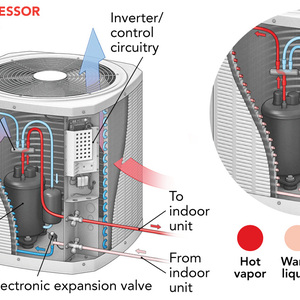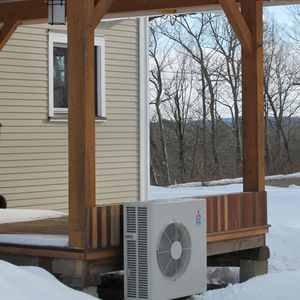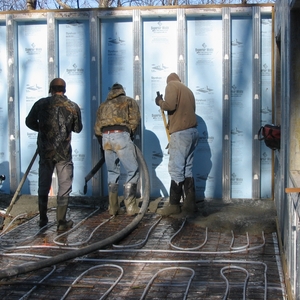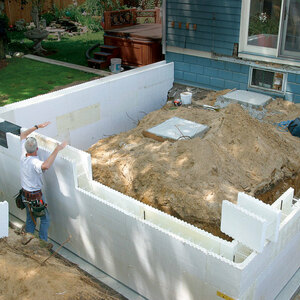
When considering the best choices to heat and cool high-performance homes, my mind immediately goes to heat pumps. They are very efficient systems that facilitate electrification of homes. However, there are a variety of tradeoffs and considerations around types of systems, climate zone, size of heating and cooling loads, and installation. Some of these can have a substantial impact on the performance and ‘greenness’ of the system. Let’s review some of them.
Minisplits
Minisplits are probably the most familiar type of system. In heating mode, they extract heat from the outdoor air and pump it indoors via refrigerant. In cooling mode, it is the opposite, and they extract heat from the indoor air and pump it outside much like a typical central a/c system. (For a detailed review of the refrigerant cycle see Heat Pumps for Cold Climates.)

A wide variety of well-established manufacturers offer high-performance systems with multiple options including ductless wall-mounted, floor-mounted, and recessed ceiling systems, as well as a variety of ducted offerings with options for small to fully centralized distribution systems.

Cold-climate specific systems are suitable for homes in climate zone 6 since the practical lower operating limit is typically around -15°F. In climate zones 7 and 8, these systems can cover a substantial portion of heating loads but need to be supplemented with a secondary heat source such as electric resistance baseboard, cove heaters, or heat strips (in line with ducted systems).
However, progress is being made as the Carrier Infinity Series can maintain 75% output at -22°F. Additionally, the Department of Energy launched the Residential Cold Climate Heat Pump Technology Challenge that includes an optional goal of optimizing performance at -15°F. It will be interesting to see how…
Weekly Newsletter
Get building science and energy efficiency advice, plus special offers, in your inbox.

This article is only available to GBA Prime Members
Sign up for a free trial and get instant access to this article as well as GBA’s complete library of premium articles and construction details.
Start Free TrialAlready a member? Log in














2 Comments
In winter, would the refrigerant that travels to a minisplit be heated to a higher temperature than the water / glycol mixture in an air to water heat pump? If so, does this mean the air to water heat pump operates at a higher efficiency?
I am new to learning about HVAC, which is likely leading to me using less than ideal terminology.
Thanks for your help,
Ben
Also new to heat pumps, but getting info slowly as if I move and do a new build I may not be allowed to use a NG hi-eff. boiler. Having cooling available is an added bonus, but I'm curious about ducting. Since heat rises, air from the heating cycle will of course rise from the floor ducts. But when it comes to cooling, cool air drops, so is it desirable that cool air be directed into ceiling vents?
Also, what is the duct air velocity and noise in heat pump systems? Can they use mini fans in each duct, rather than just one big blower feeding the plenum like the old furnaces used to do? One thing I like about HW baseboard is that it is silent and not drafty, although I do have a large ceiling fan running slowly 24/7 to keep the air moving gently.
Log in or become a member to post a comment.
Sign up Log in